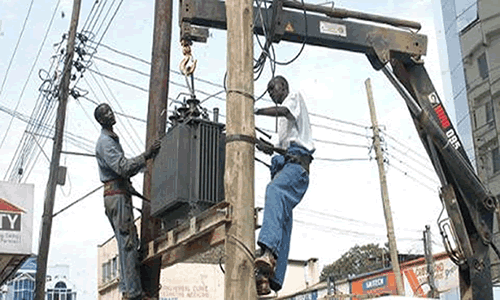150,000 Liberians to benefit reliable electricity

 The World Bank Board of Executive Directors has approved a new financing agreement of US$27 million to increase access to affordable and reliable electricity and to foster the use of renewable energy sources in Liberia.
The World Bank Board of Executive Directors has approved a new financing agreement of US$27 million to increase access to affordable and reliable electricity and to foster the use of renewable energy sources in Liberia.
According to a statement issued yesterday, the agreement comprises of US$25 million grant from the Strategic Climate Fund Scaling up Renewable Energy Program and US$2 million International Development Association or IDA credit.
It says the Liberia Renewable Energy Access Project or LIRENAP seeks to establish a mini hydropower plant to benefit about 50,000 people, as well as small businesses, associations and public institutions in Lofa County through connections to the mini-hydro electric grid.
The statement further disclosed that the project would also benefit additional 100,000 people nationwide who would gain access to stand-alone solar systems and lanterns. “This project, aligned with Liberia’s development strategy, Agenda for Transformation, targets electricity service expansion, reduction of the cost of electricity and fostering renewable energy resources, which are essential components for achieving sustainable economic transformation and poverty reduction,”IngunaDobraja, World Bank Liberia Country Manager noted.
It noted the expansion of electricity access would be critical to expand access to electricity services in remote areas that are not likely to be connected to the national grid in the foreseeable future, and to promote nationwide use of renewable sources of energy away from more expensive imported fuel.
According to the statement, the LIRENAP would also contribute to the Liberian Government’s efforts to rebuild the economy after the Ebola outbreak since the project’s area of major intervention will be in Lofa County, harshly affected by the epidemic in 2014.
“This project targets the construction of a hydropower plant near Kolahun on the Kaiha River, distribution lines and facilitating connections for households, businesses and public entities,” said Clemencia Torres de Mästle and David Vilar, World Bank Co-Task Team Leaders. Major towns to benefit from this hydropower plant are Voinjama, Foya, Kohalun, Massambolahun/Bolahun and surrounding areas, they added.
[bsa_pro_ad_space id=1]
Meanwhile, the LIRENAP will be implemented by the Rural and Renewable Energy Agency (RREA) of Liberia and it would liaise with the Ministry of Lands, Mines and Energy to ensure consistency between the activities financed under this project and the sector policies for decentralized electrification, and how the project is also aiming at enhancing the capacity of the RREA, the Bank further detailed.
It recorded that in February 2014, with the financing of the World Bank, RREA completed and handed over to the Government of Liberia a rehabilitated and expanded 60 kilowatts mini-hydro plant in Yandohun, Lofa County, and continued that the present LIRENAP builds upon the experience gained from this pilot project, which seeks to expand the benefits of developing the hydro-electrical potential of the country.
The World Bank’s International Development Association or IDA, established in 1960, helps the world’s poorest countries by providing grants and low to zero-interest loans for projects and programs that boost economic growth, reduce poverty, and improve poor people’s lives.
IDA is one of the largest sources of assistance for the world’s 77 poorest countries, 39 of which are in Africa. Resources from IDA bring positive change for 2.8 billion people, the majority of whom live on less than $2 a day. Since 1960, IDA has supported development work in 112 countries. Annual commitments have averaged about $18 billion over the last three years, with about 50 percent going to Africa.Press Statement




















